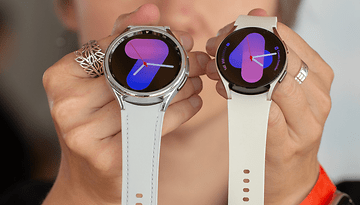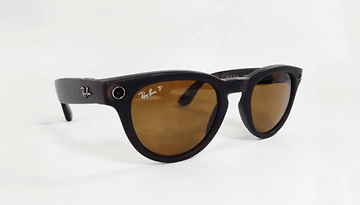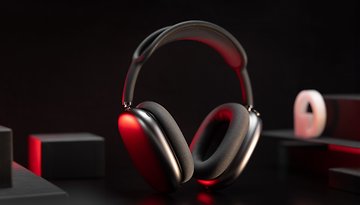Galaxy Watch 4 review: First Android smartwatch I would actually buy!


Samsung ventured into new territory with the One UI Watch and collaborated with Google to deliver this timepiece. The new operating system makes the Galaxy Watch 4 the first smartwatch that I would personally buy. As my review would show, connectivity to the smartphone on Android is finally a seamless experience, and the hardware of the Watch 4 is also more than charming.
Good
- Seamless connectivity between watch and smartphone
- Very good AMOLED display
- Beautiful user interface
- Compact, lightweight, and high quality build
- ECG, pulse, pulse oximeter, blood pressure, body composition sensors
Bad
- Battery life is rather short
- Some tracking features work only with Samsung devices
- Not compatible with iPhones
- Only 7.6 of 16 GB of memory is usable
- No Qi wireless charging support

Samsung Galaxy Watch 4 in a nutshell
Smartwatches that require daily charging are anathema to me! Nevertheless, the Galaxy Watch 4 is the very first smartwatch that I would buy for myself. Certainly my worldwide and certainly very prestigious seal of approval was given to Samsung mainly because of their One UI Watch. The operating system was developed in partnership with Google, offering a seamless connection between smartphone and the watch, and is just as intuitive and pretty-looking as Tizen OS.
All models with their prices at a glance
| Model | Price |
|---|---|
| Galaxy Watch 4 WiFi 40 mm | $249.99 |
| Galaxy Watch 4 LTE 40 mm | $299.99 |
| Galaxy Watch 4 WiFi 44 mm | $279.99 |
| Galaxy Watch 4 LTE 44 mm | $329.99 |
The hardware of the Galaxy Watch 4 shines with a brilliant AMOLED display, while offering premium features such as blood pressure measurement, an ECG, body composition analysis, and even snoring analysis. All the while, the watch's performance is 95 percent smooth. What makes it painful to use is the rather limited storage space that is almost half full right out of the box itself.
This leaves only 7.6 GB of free space for apps, photos, and music. The battery life also drops to less than a day's worth during intensive use and as an iPhone user, this certainly grates against my previous experiences. The range of functions is also limited in Android smartphones that do not hail from Samsung.
If you want to buy the Galaxy Watch 4 (40 mm without LTE), you will have to pay $249.99 a pop.
Design: Refined to deliver an Active look
There has been a change in strategy: The Galaxy Watch 4 now resembles the older Active models. The rotating bezel, which is now found in the Classic model, has been omitted. This makes the Galaxy Watch 4 much slimmer and less conspicuous during sporting activities. There's a choice of a 40-millimeter case model and one with a 44-millimeter case.
What I liked:
- Feels wonderfully slim and light on the wrist.
- AMOLED display is nice and bright with a high contrast.
- Digital bezel is very handy to use.
What I disliked:
- Not usable while wearing gloves without any mechanical controls.
- Included wristband feels rather cheap.
Samsung has rethought its target market by refining the design of the Galaxy Watch 4. Moving away from a swanky design with a virtual second hand that ticks and towards a simpler case sans a rotating bezel. The redesign feels more contemporary in my opinion and is now a bit more congruent with its intended use. After all, the Watch 4 supports an active lifestyle and is hardly noticeable when jogging, swimming, cycling, or even when you are sleeping. When it comes to water, Samsung has certified the watch to 5 ATM, so you should be able to go swimming in one without any problems.

The tried-and-tested 40-millimeter model tips the scales at only 25.9 grams and measures 40.4 x 39.3 x 9.8 millimeters according to the homepage. Set into the aluminum casing sits a brilliant Super AMOLED display that measures 1.2 inches and is circular in nature. The 396 x 396 pixels resolution ensures that you are unable to make out individual pixels. On the software side, the edges of the screen are understood to be a digital bezel.
So, upon closer inspection, it's not the edge around the display that acts as a bezel. However, this is not relevant in practice because if you were to follow it with your finger in a circle, you will scroll lists downward or change the so-called "tiles". All these are fed back t the user with precise vibrations. Samsung has not skimped on the vibration motor as well, although they could have done better with the speaker. The latter is almost suitable for undemanding music listening and made Stefan's eyes bulge in the surprise test!

Operation and One UI Watch
New smartwatches are always measured against the gold standard that is known as the Apple Watch. In a closed ecosystem, Apple created a seamless experience between smartwatch and smartphone that is difficult to match. Samsung, however, is getting much closer to this goal with its new One UI Watch as it was created in collaboration with Google and is based on WearOS.
What I liked:
- Great connection between smartphone and smartwatch.
- If things get too complicated, the smartwatch will refer you to the smartphone.
- High variety of available apps.
What I disliked:
- Not compatible with iPhones.
- Unable to use while wearing gloves.
- Software takes up too much internal memory.
With the Galaxy Watch 4, Samsung bade goodbye to Tizen, its very own smartwatch operating system. Instead, the manufacturer partnered with Samsung to develop the "One UI Watch" OS, which is sort of a combination of Tizen and WearOS. After a few days of use, I can jubilantly state this: Samsung has brought the benefits of both operating systems together on the Galaxy Watch 4.
First and foremost, I like the connection between the smartphone and the smartwatch, which is not only reliable, but also intuitive. If it gets too confusing on the display of the smartwatch, then your smart timepiece will make sure you get to work those controls on the smartphone in the "Galaxy Wear" app via the appropriate screen. This offers you many setting options and even includes a digital user manual!

From there, you can also access a special page in the Play Store that shows compatible apps. In addition to new watchfaces, there are important applications such as Spotify, Google Maps, Komoot, Google Pay, Shazam, and many others. WearOS as a basis ensures a fantastic variety of compatible apps. However, the ability of the smartwatch to automatically install compatible apps that are already installed on your smartphone did not work in the test.
The division into tiles, apps, and quick panels also does take some getting used to. "Tiles" are a total of 13 information screens that you can access by rotating the digital bezel. The available tiles are fixed, but you can remove unneeded tiles from the watch and change their order. In the app overview, you will now find all of the smartwatch's functions, although there are overlaps with the tiles. In the beginning, I was sometimes unsure whether I have to launch, for instance, sports tracking in the tiles or via the app. It is here where I think that Samsung could still improve.

Compared to its predecessor, I also found it a shame that the Galaxy Watch 4 can no longer be operated while wearing gloves. That was possible with some restrictions thanks to the mechanical bezel. Competitors like the Apple Watch Series 7 or the Huawei Watch 3 Pro do offer mechanical controls. So during the winter, you'll have to use the smartwatch with your nose in a precise manner. Ain't that a sight to behold!
The number of apps that can be installed is also more limited than initially thought. While the Galaxy Watch 4's internal storage is a solid 16 GB, only 7.6 GB of that is available to the user.
This is an annoyance to me, especially if you would also like to download offline music from Spotify or store photos on the smartwatch. In the future, One UI Watch will have to become much more space-saving or the internal storage will have to be increased further.
Features & Tracking
The Galaxy Watch 4's feature list is insanely long, despite its small size. There's GPS, a digital compass, WiFi, LTE, a pulse oximeter, a heart rate monitor, a digital ECG, microphone and speaker for calls, NFC for digital payments, a bioimpedance sensor for analyzing your body composition, a blood pressure sensor, accelerometers, and more.
What I liked:
- Bioimpedance sensor and blood pressure measurement sensors are unique (previously available only in fitness trackers).
- Highly versatile thanks to GPS and LTE (at an additional cost).
What I disliked:
- Digital ECG as well as blood pressure measurement works only with Samsung smartphones.
Let me try a so-called "meme" ...
Samsung fans: What features are there in the new Galaxy Watch 4?
Samsung: Yes!
Okay, I don't think that worked out the way I intended it to. But nonetheless, the Galaxy Watch 4 is the most feature-rich smartwatch that is currently available on the market. That's because Samsung has integrated a bio-impedance sensor that uses mild surges of electricity to measure the composition of your body, somewhat a bit like your modern weight scale. There's also a digital ECG and a blood pressure meter in the works.
Samsung doesn't achieve the precision of medical devices, but at least there are visible trends here. This is provided you can use the ECG and blood pressure measurement at all. Unfortunately, these features are only available on Samsung smartphones. There is a workaround for other Android devices, but as my colleagues from Netzwelt wrote, the entire workaround is still very unstable.
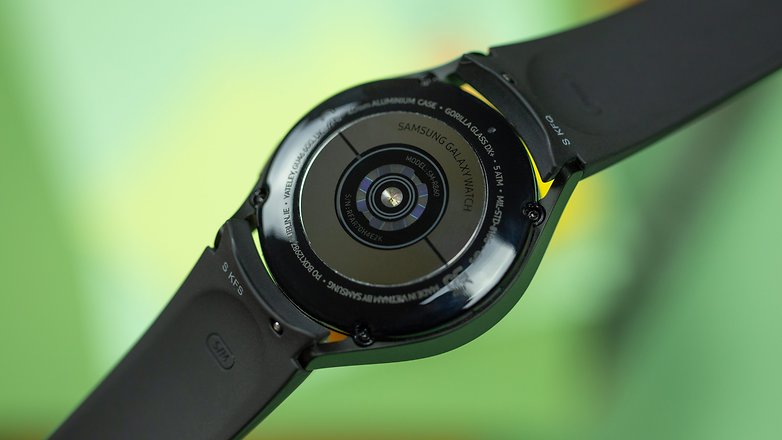
Even on a Galaxy S21 Ultra, the user experience was anything but intuitive. You will need both a Google and a Samsung account to set it up, and then you can only find the app via the in-house Galaxy Store. While you can use the ECG directly after installing the "Samsung Health Monitor" app, you will have to calibrate the blood pressure monitor using an external blood pressure meter. The interaction of a total of three Samsung apps for using the smartwatch (Galaxy Wearable, Health Monitor, and Health) is simply awkward. Samsung should provide more clarity here in the future.

Also new here is the snore detection ability which has been integrated as an extension of its sleep analysis. You can leave it on permanently or if desired, only once, for the Galaxy Watch to listen to you while you sleep, where it even saves the audio recording if you so desire. This feature is great for the prevention of potentially very dangerous sleep apnea, even if listening in on your sleep is somewhat disturbing.
Battery life: Unfortunately too short
The Galaxy Watch 4 has a battery rated at 247 milliampere hours. This should provide you with a "typical usage" of 40 hours. When the battery is empty, you can charge the smartwatch via the included charging puck or compatible wireless chargers. Unfortunately, the watch is not compatible with the Qi wireless standard.
What I liked:
- Included charging puck is nice and small.
What I disliked:
- Battery life is less than a day (!) with intensive use.
- No Qi wireless charging support.
The question of how Samsung packs so many features into such a tiny package is answered by the battery capacity. The 247 milliampere hours did not get me through a full day after activating all the tracking features. Admittedly, I also exercised for an hour in the evening and activated tracking then.

When it comes to smartwatches, you will have to make a choice: A small case and with short battery life or a large case and 2-3 days of staying power. The Watch 4 places the focus entirely on the former. Still, I have to fault the short battery life, as do many reviewers on Samsung's homepage.
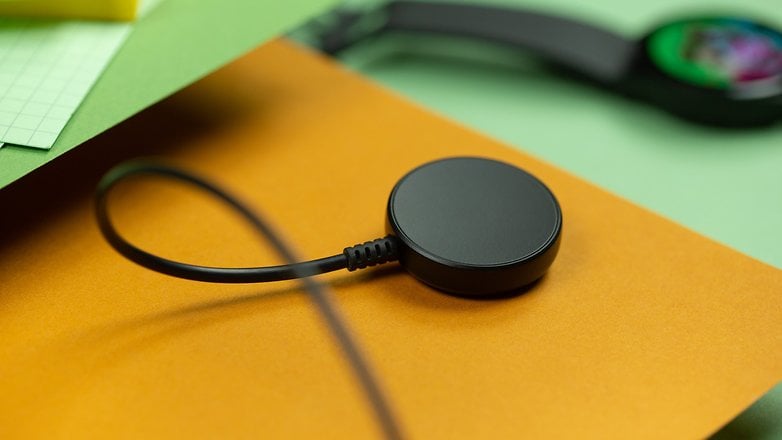
Charging is a straightforward affair with the Watch 4. You can either use the included magnetic charging puck or a Galaxy-compatible charging pad. Unfortunately, Samsung no longer supports the Qi wireless charging standard in the Watch 4. Reverse wireless charging wasn't possible with a Pixel 6, but it was with a Galaxy S21 Ultra. Once again, Samsung has shot itself in the foot here! That's too bad!
Conclusion
In my opinion, Samsung has managed to secure the throne of the best Android smartwatch. After all, knocking on Google's door for a collaboration has really paid off in reality. The connection to the smartphone remains reliable and there are countless apps to try out. At the same time, the user experience is intuitive in most cases and is certainly an easy jump for fans of TizenOS.

Technically, the smartwatch is a bit of a milestone and that's due to the integration of a bio-impedance sensor. Qualities of its predecessor, including pulse measurement, SpO2 measurement, and blood pressure measurement were retained by Samsung. Unfortunately, some of these features are only exclusive to Samsung smartphones, as the required app is not available in the Google Play Store. Unfortunately, this smartwatch is out of the question for iOS users.
As for the biggest criticism, I have to award it to the low battery life. The smartwatch lasts less than a day with tracking functions and permanent Bluetooth connection activated. Even though I stand by the fact that the Watch 4 is the first smartwatch that I would buy for myself, this ultimately deters me from purchasing one.
Just agree with me here for now, and we should meet again to review the Classic model. In the meantime, I recommend checking out our list of the best smartwatches for iOS and Android.







